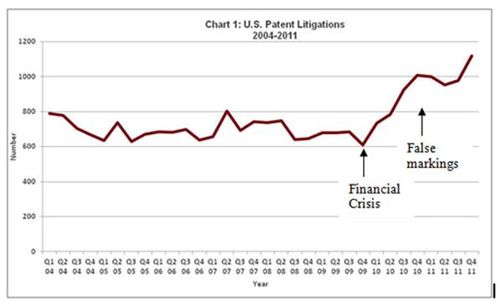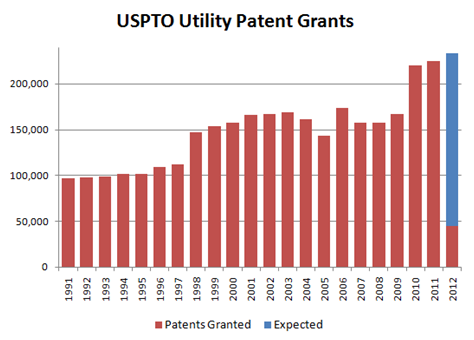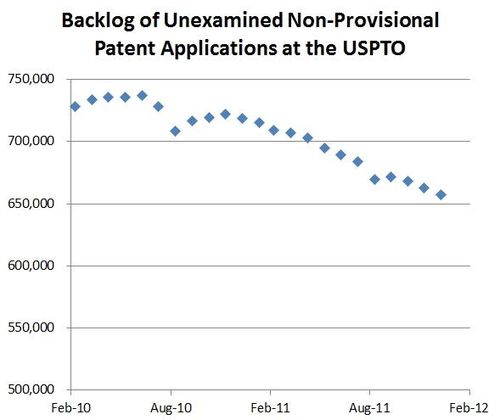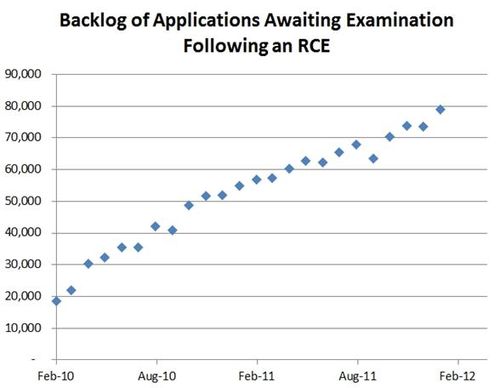By David M. Longo, Ph.D. of Finnegan LLP1
This post addresses the Federal Circuit’s March 5, 2012, precedential opinion In re Staats, Appeal No. 2010-1443, in which Judge Dyk writes for the majority. In short, the Federal Circuit holds that it is bound by In re Doll, 419 F.2d 925 (CCPA 1970), and that both 35 U.S.C. § 251 and Doll permit the filing of a continuing reissue application to broaden patented claims beyond the statutory two-year period—even when the continuation claims are broadened—in a manner unrelated to any broadening aspect identified within the two-year period. For a more in-depth discussion of 140 years of reissue case law, legislative history, and statutory shaping pertaining to broadening reissue practice, including an analysis of the facts and oral arguments in Staats leading up to the opinion, please see the author’s publication Checking the Staats: How Long is Too Long to Give Adequate Public Notice in Broadening Reissue Patent Applications?, 2011 Duke L. & Tech. Rev. 009 available at http://www.law.duke.edu/journals/dltr/articles/2011dltr009.
One of the most straightforward ways patent owners can expand the limited monopoly of a patent is by seeking increased claim scope by one or more broadening reissue patent applications. While patent owners may narrow the scope of patent claims at any time during the life of the patent, they may only broaden claim scope for a limited period of time after issuance of the patent. See MPEP § 1412.03, discussing implementation of 35 U.S.C. § 251. Despite this relatively clear statutory provision in § 251, however, an expansive body of case law has construed the provision, dating back well over a century.
The Staats opinion had the potential to become the most definitive statement in broadening reissue practice in almost twenty years. Passing on such a wonderful opportunity, the CAFC instead blandly upheld Doll and bluntly invited the USPTO to seek en banc review. In fact, Judge Dyk’s majority opinion states, “If the PTO believes we should overrule Doll, that is a matter that must be presented to the en banc court.” Slip Op. at 11. Judge O’Malley’s concurring opinion, which concurs in the opinion’s judgment but not its reasoning, states, “To the extent the majority opinion is no more than a begrudging nod to Doll‘s precedential effect with an invitation to reconsider that decision, the majority opinion is wrong.” Slip Op. at 12 (concurrence at 1).
The Staats case presents a collision between two robust statutory interpretations and two equally weighty sets of policy considerations. On the one hand, the public-notice function cited by both the USPTO and the Board—and regarded as a hallmark of the protections in § 251—is crucial. The public has the right to know what is claimed and disclaimed in a patent, and one could argue that patentees should not be permitted to reshape their inventions throughout the life of the patent simply by lodging a “placeholder” broadening reissue application within two years of patent issuance, from which any number of potentially disparate continuing reissue applications could be filed. Allowing such activity without adequate safeguards could result in a scenario in which a competitor could potentially spend an obscene amount of money based on the perceived bounds of the limited monopoly granted by a particular patent, only to face an infringement action years later after the boundaries of the limited monopoly have shifted. Likewise, such activity may make it difficult for a competitor to assess whether it has freedom to operate in a particular technology—again because of shifting boundaries of the limited monopoly. Consistent with this perspective, the USPTO’s position in Staats held firm against effectively giving an applicant a license to unforeseeably shift from one invention to another through reissue well beyond the two-year statutory period. See Ex parte Staats, No. 2009-007162, 2010 WL 1725728, at *9 (BPAI Apr. 26, 2010).
On the other hand, as argued by Apple in the Staats appeal to the Board, the CCPA in Doll held that the intervening rights provided by 35 U.S.C. § 252 are potentially sufficient to counterbalance damage to public notice done by broadening reissues. Having initial public notice within two years of patent issuance should adequately balance the needs of patentees and the public. See Brief of Appellant-Petitioner, In re Staats, No. 2010-1443 (Fed. Cir. Dec. 16, 2010), 2010 U.S. Fed. Cir. Briefs LEXIS 1111, at *9–11. That is, there is a clear quid pro quo—in exchange for a reissued patent, the patentee must “surrender” the original patent. Furthermore, given the recent transparency in publication and prosecution practice for pending applications and reissue applications at the USPTO, applicants already surrender a great deal of secrecy before issuance of a patent or reissue patent. Any broadening reissue patent claims would, of course, require support by the patent specification or other claims, which could have effectively been part of public knowledge for years before the broadening. Therefore, one can argue that nothing would serve to hamper a competitor from developing a competing and noninfringing product with improvements in the years it would undoubtedly take for the USPTO to wade through applications, reissues, and continuations of those reissues.
Thus, a classic property-rights question looms large in the field of patent law: where do the rights of inventors end and the rights of the public begin? The rights of inventors to modify the scope of their claimed inventions, even after the patent issues, can directly conflict with the concepts of public notice and the public domain. The Patent Act currently permits broadening of claims so long as a reissue application showing intent to broaden is filed within two years of the original patent issue. Over the years, however, this relatively straightforward statutory provision has sparked a spate of disputes over its meaning and application.
Despite these disputes, the CAFC reaffirmed Doll, and Judge O’Malley’s concurrence expanded on its reasoning:
The MPEP and PTO Rule 175 are, moreover, consistent with all relevant case law interpreting § 251. As the majority notes, Doll concluded that § 251’s time limits are applicable only to the first broadening reissue application and do not, accordingly, bar further broadening changes thereafter. [In re Doll] 419 F.2d. at 928. This court has twice reaffirmed that reading of § 251, moreover. See In re Graff, 111 F.3d 874, 877 (Fed. Cir. 1997) (“The court in Doll simply held that the reissue applicant, in the course of prosecution of the reissue application, was not barred from making further broadening changes in the claims.”); In re Fotland, 779 F.2d 31, 34 (Fed. Cir. 1985) (“In Doll the Court of Customs and Patent Appeals held that when a broadening reissue application was on file within the two year period, the claims could be further broadened after the two year period.”). As the majority opinion makes clear, the PTO’s efforts to distinguish those cases so as to avoid the need to comply with their holdings stretch credulity. (Slip. Op. at 15, concurrence at 4.)
Even with the benefit of the last forty years of reissue case law—including Doll, In re Fotland (779 F.2d 31 (Fed. Cir. 1985)), Buell v. Beckestrom (22 USPQ2d 1128 (BPAI 1992)), In re Graff (111 F.3d 874 (Fed. Cir. 1997)), and now Staats—broadening reissue practice will likely remain a headache for patent attorneys. For the time being, though, we have a pill for that headache. Without any changes from a possible en banc review, broadening reissue patent practice permits a scenario where, as Apple argued, the possible or eventual scope of the initial broadening need not be fully laid out in the first reissue application filed within the two-year statutory window, as long as the initial intent to broaden appears within that window. See Ex parte Staats, No. 2009-007162, 2010 WL 1725728, at *2 (BPAI Apr. 26, 2010). Tipping the scales slightly away from robust public notice, Staats (vis-à-vis Doll) essentially tells us that “any intent” to broaden within two years of patent issuance permits any broadening in a later—and properly filed—continuation or divisional reissue application. Whether this is the best remedy for a fairly persistent headache remains to be seen.
1 This post represents the thoughts and opinions of the author alone and not those of Finnegan LLP. It is intended to convey general information only and should not be construed as a legal opinion or as legal advice.
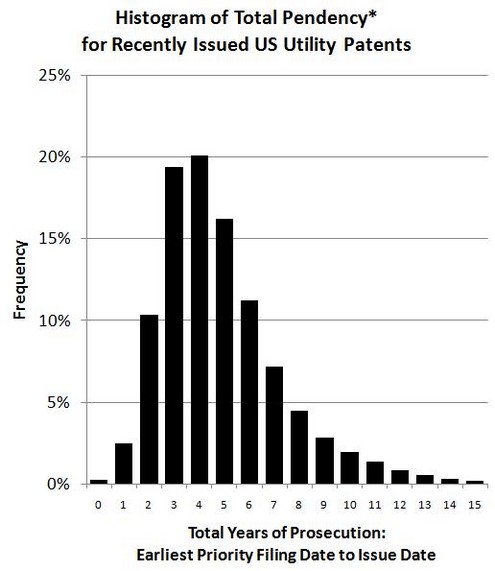
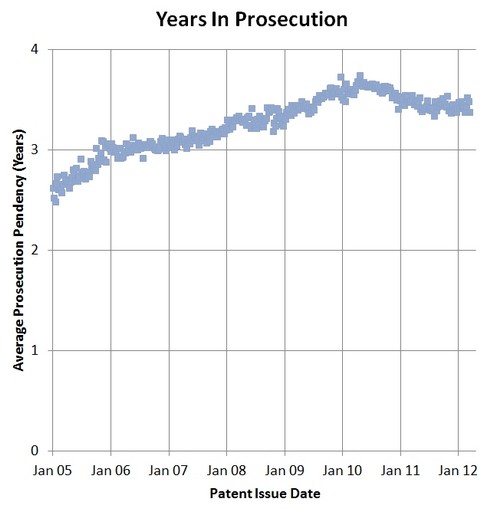
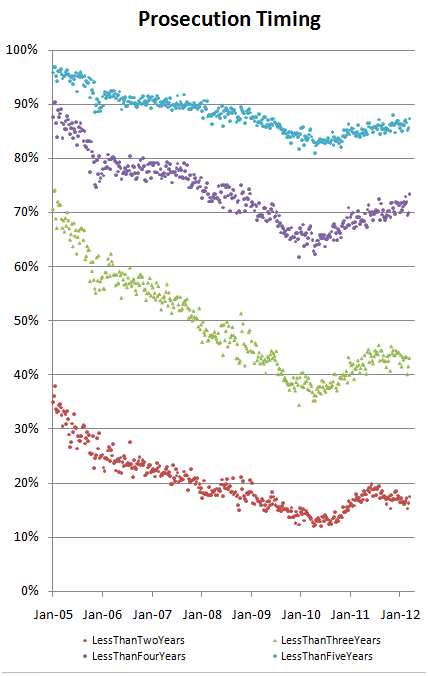
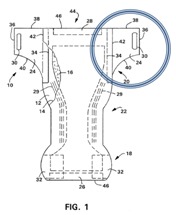 by Dennis Crouch
by Dennis Crouch 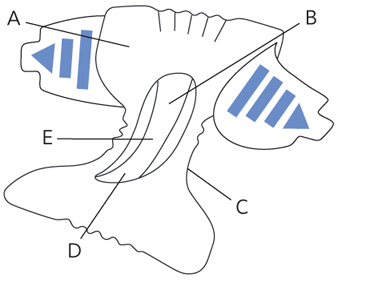
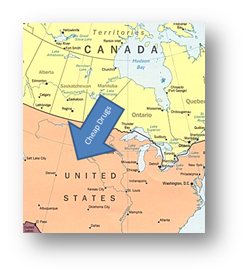 Can someone point me to resources for determining whether and when a US resident can legally purchase prescription drugs over the internet from a Canadian distributor for personal use within the US? Does it matter whether the drug is patented in the US, but not patented in Canada? And, if illegal or a violation of patent rights, has there been any enforcement against US individuals or Canadian distributors? Finally, is there a list available of prescription drugs that are patented in the US, but available in generic form in Canada or other countries with well regulated* pharmaceutical industries?
Can someone point me to resources for determining whether and when a US resident can legally purchase prescription drugs over the internet from a Canadian distributor for personal use within the US? Does it matter whether the drug is patented in the US, but not patented in Canada? And, if illegal or a violation of patent rights, has there been any enforcement against US individuals or Canadian distributors? Finally, is there a list available of prescription drugs that are patented in the US, but available in generic form in Canada or other countries with well regulated* pharmaceutical industries? 